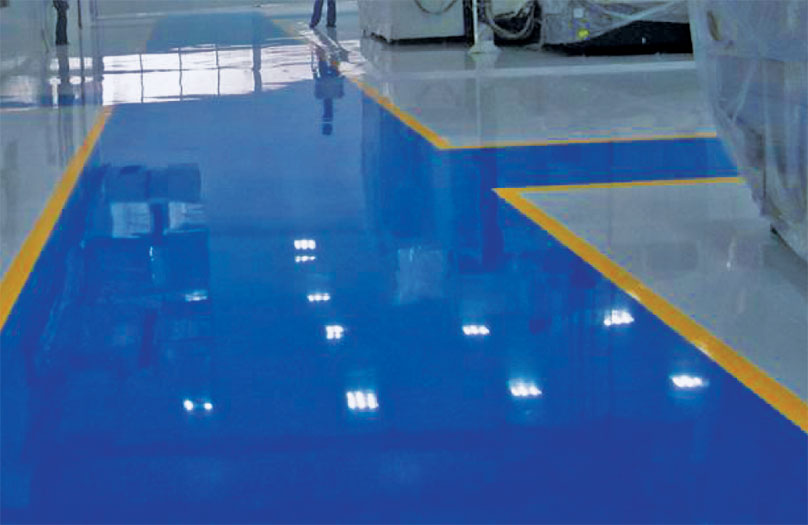Self-smoothing epoxy based flooring system

Nitoflor SL2000, 4-component, self-smoothing epoxy based flooring system, consists of graded aggregates bound in a pigmented epoxy resin binder. It can be used for flooring of workshops, production and storage areas, warehouses, etc.
Advantages
Easy to apply, solvent free, excellent adhesion to substrate, high abrasion resistance, good compressive strength, gloss or matt finish, easy to clean.
Application procedure
The designated floor areas shall be surfaced with Nitoflor SL3000, a 3 mm thick flow-applied epoxy resin floor topping. The topping shall achieve a minimum compressive strength of 40 N/mm2 and a flexural strength of 25 N/mm2 at 7 days when tested to BS6319. At 20 C, it shall be capable of accepting foot traffic at 24 hours and vehicular traffic at 48 hours.
Mixing: Nitoflor SL flooring is supplied in four pre-weighed packs (base, hardener, aggregate and colour pack) which are ready for immediate on-site mixing. Part mixing of these components is not acceptable and will affect both performance and appearance of the finished floor. Mixing should be carried out using either a forced action mixer; or a heavy duty, slow-speed drill fitted with mixing paddle. All such equipment should be of a type and capacity approved by Fosroc. The components should be mixed in a suitably sized mixing vessel. The colour pack should be added to the base container and mixed for 15-30 seconds, until homogeneous. Then add the hardener and mix for further 30 seconds, until an even colour and texture is obtained. Thereafter, the contents of the graded aggregate pack should be slowly added and mixing carried out for a further 3 minutes until a completely homogenous material is obtained.
Application: The applicator should ensure that there are sufficient supplies of plant, labour and materials to make the mixing and subsequent application process a continuous one for any given, independent floor area. Once mixed, the material must be used within its specified pot life. The material should be poured onto the prepared and primed substrate as soon as mixing is complete. It should be spread to the required thickness using a serrated trowel; with care taken not to overwork the resin,
spreading evenly and slowly. Immediately after laying, the material should be rolled, using a spiked nylon roller, to remove slight trowel marks, and to assist air release. The rolling should be carried out using a ‘back and forth’ technique along the same path. An overlap of 50% with adjacent paths is recommended. Further light rolling may be required to remove surface imperfections, or for subsequent release of trapped air, but should be prior to the setting of the product.
Expansion joints: All existing Expansion or movement joints should be left uncoated over the new floor surface i.e. the flooring shall be discontinued at the joints. Joints shall be sealed with Nitosea
Cookie Consent
We use cookies to personalize your experience. By continuing to visit this website you agree to our Terms & Conditions, Privacy Policy and Cookie Policy.









